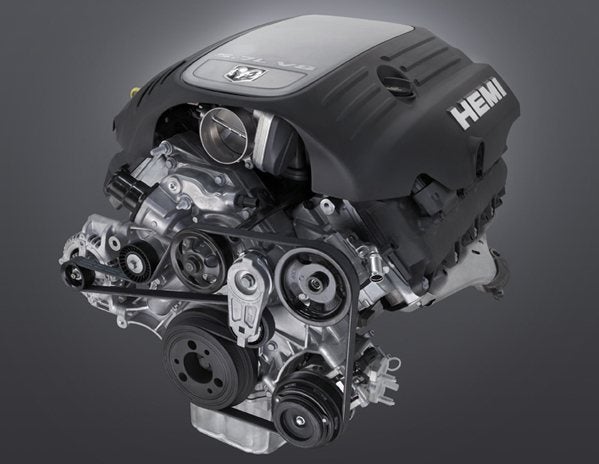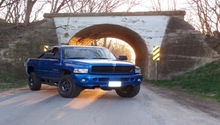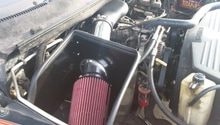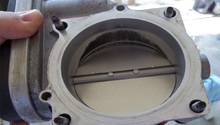Dodge Ram 2009-Present: Performance Modifications
Bolt-on modifications are a great way to increase power and performance without digging into engine internals. Bolt-on mods can be easily installed and vary in price range as well as power gained. As the old adage goes: speed costs money, how fast do you want to spend?
This article applies to the 4th Generation Dodge Ram 1500 (2009-Present).
Enthusiasts are always after a way to improve their truck in any way possible. Most of us are after a healthy dose of horsepower and torque improvements without breaking the bank. Fortunately, the aftermarket has acknowledged this inherent nature of gearheads and has provided the public with a plethora of bolt-on modifications for the fourth generation Ram 1500. Whether a truck is used for off-roading, towing the family camper, or hitting the drag strips, there are engine performance modifications to suit all applications. This article will outline some of the most popular bolt-on performance modifications that are available for the Dodge Ram 1500.
Bolt-On Performance Modifications
The fourth generation Ram 1500 has quite a few different bolt-on performance modifications, despite the truck still being quite new. The beauty of bolt-on mods is that they are relatively affordable and can be done in stages. While individual mods typically have small to moderate performance gains, the addition of more modifications will enhance the engine package as a whole. Many owners take careful steps in planning which components they will mix and match to achieve the desired performance characteristics out of their truck. Bolt-on mods are usually completely reversible, allowing the truck to be returned to stock form at any time; however, once owners catch the "mod-bug," rarely do they turn back.

Cold Air Intake

DIY Cost – $250
Professional Cost – $300+
Skill Level – Easy; can be quickly installed with basic tools.
One of the first modifications Ram owners install on their trucks is a cold air intake. While it is debatable whether an aftermarket or custom made air intake improves performance on a stock 4th Generation Ram, the consensus is that most performance gains are seen when coupled with other bolt-on performance mods. The idea of a cold air intake is to maximize the flow of air into the engine via a larger airbox/filter assembly. The additional air combined with additional fuel typically makes for more horsepower. Many air intake manufacturers advertise large increases in horsepower numbers; however, real world testing typically shows gains of 3% to 5%. While this modification will not boast huge performance gains, it is a popular upgrade that will improve the intake sound of the engine and set the foundation for future bolt-on mods. Recommended for drivers who are starting to modify their trucks.
Throttle Body

DIY Cost – $300-$500
Professional Cost – $500+
Skill Level – Easy; can be installed with basic tools in about 10 minutes.
The throttle body is a component of the intake system that meters the amount of air entering the engine. The butterfly valve in the throttle body opens to allow more air into the engine when the gas pedal is depressed. Aftermarket throttle body manufacturers and tuners make various adjustments to their throttle bodies to increase the volume as well as velocity of air flow entering the engine, thus increasing engine performance.
Some tuners port their throttle body housing to a larger diameter while leaving the butterfly valve stock, whereas others modify the butterfly valve or even cast a whole new larger throttle body housing. It is important to properly research a throttle body purchase as some are marketed as "over-sized," but in actuality are referring only to the housing's maximum diameter at a given point and not the smallest point in the throttle body. Many individuals rush to install the largest throttle body they can get their hands on, and while this may improve top-end performance, it can actually reduce low-mid range power. The general rule of thumb for choosing the correct size throttle body for a Hemi V8 is to install the one that matches your level of modifications and driving style.
For a truck with mild modifications, such as a cold air intake and exhaust, an 80 to 83mm throttle body is usually ideal to maintain good low-end performance, while increasing flow on the top-end; whereas an 85mm will sacrifice some low-end torque for extra performance at higher rpms. For owners with significant engine mods (cams, cylinder head work, etc.), a throttle body of at least 85mm should be used to prevent choking up the air flow to the engine. Somewhere between the range of 85 to 90mm can be used depending on the desired performance characteristics you are looking for and the type of driving you do. In general, most owners opt for an 85mm throttle body because they can see immediate gains of 10 to 15 horsepower, while also having room to grow into the throttle body with future supporting modifications. Recommended for its horsepower gains.
Engine Tuning

DIY Cost – $350-$1,000
Professional Cost – N/A
Skill Level – Easy; it is installed with handheld programmer included with engine tune.
Perhaps the biggest change in performance modifications that has made its way to the forefront in recent years is programmable engine tuning. With modern fuel injected engines being computer controlled, electronic engine tuning adjusts variables such as spark advance and fuel trims in the powertrain control module (PCM) to optimize engine performance. These handheld computers simply plug into the OBD-II port of the truck and remap parameters in the PCM to improve horsepower, torque, and even fuel economy.
Standard tuning software is available from various manufacturers that provides decent increases across the board, but often do not take into account any other modifications the truck may have. Similarly, there are custom tunes available that are made specifically for each truck to optimize the installed modifications. This usually entails working with a tuner to dial in the engine performance based on the intended use of the truck. A benefit of purchasing a tune and tuner for your truck is that the tuning computer can also datalog critical engine information as well as read and clear diagnostic trouble codes. The general consensus is that tuning the engine is some of the best money spent on the Dodge Ram. Recommended for its easy installation.
Exhaust

DIY Cost – $250-$1,500
Professional Cost – $300+
Skill Level – Easy to Moderate; most exhaust components are direct bolt-on, but mixing components may require fabrication.
For anyone looking to get an angry growl out of their engine, exhaust modifications are at the top of the list. With so many bolt-on options available that improve the intake side of the engine, the exhaust is sometimes forgotten. Modern trucks have fairly restrictive exhaust systems from the factory that are in place to meet noise and emission requirements. From a performance standpoint, these can be improved upon by reducing restrictions and increasing exhaust flow.
The typical exhaust system is comprised of headers/exhaust manifolds, mid-pipes, catalytic converters, and mufflers. For individuals mainly concerned with improving the exhaust note of their truck, a new muffler or cat-back system will free up a few ponies while providing a throaty sound. The biggest performance gains are typically found by installing headers and/or mid-pipes. Tubular style headers will scavenge exhaust gases from the cylinders more efficiently than the OEM exhaust manifolds. Similarly, an X or H pipe (mid-pipes) will help equalize the exhaust flow from each bank of the engine and result in better performance. Some mid-pipes have the option of removing the catalytic converters if using the truck off-road or at the race track. As with all vehicles, the largest gains will be had with a complete exhaust system. On the Ram, this usually nets a gain of 20+ horsepower and additional low-end torque. Recommended for its angry growl sound.
Supercharger Kit

DIY Cost – $5,500+
Professional Cost – $7,500+
Skill Level – Moderate; while technically a bolt-on mod, installation requires replacement of intake and fuel system components.
For individuals looking for the largest bolt-on horsepower numbers regardless of cost, a supercharger kit may be the ticket. A supercharger uses forced induction to cram more more air and subsequently more fuel into the combustion chambers to produce more power. A supercharger is belt-driven by the engine, and unlike turbocharging, provides instantaneous response with no lag. A benefit of a supercharger kit is that it comes with all necessary components that have been developed, tested, and tuned to provide reliable performance. Supercharger kits range from mild to wild, with an entry level kit typically adding 100+ wheel horsepower. Kits can be had with or without an intercooler, and can typically be upgraded with few additional components down the road. Perhaps the best part of a supercharger kit is that it can usually be coupled with other performance mods already on the vehicle and the truck can be returned to stock form at any time. Recommended for its power.
Transmission Torque Converter

DIY Cost – $500
Professional Cost – $800
Skill Level – Moderate; requires removal of the transmission to install.
While not technically an engine performance modification, a performance transmission torque converter is a popular mod that many enthusiasts are installing to increase performance on their trucks. Essentially, a torque converter in an automatic transmission serves the same purposes as a clutch does in a manual transmission: it transmits power from the engine to the transmission.
Performance torque converters increase the rpm stall at which the converter begins to "lock up" and supply power to the transmission. An aftermarket torque converter will optimize the engines power delivery by allowing the engine to rev higher and be at a more efficient point in its torque curve before supplying power to the wheels. Additionally, some manufacturers claim their units improve efficiency and reduce automatic drivetrain loss as much as 10%. The stock torque converter stall speed is typically around 1600 to 1800 rpm, whereas an aftermarket unit will have a stall between 2500 to 3200 rpm based on application. It is recommended that individuals who regularly off-road or tow use a lower stall speed to reduce heat soak in the transmission. When ordering an aftermarket torque converter, the manufacturer will usually set it up based on your performance mods and the type of driving you do. Regardless, a performance torque converter can improve performance, fuel-efficiency, and durability. Recommended for its improved performance and increase in rpms.
Related Discussions
- Cold Air Intake Recommendations - DodgeForum.com
- Air Intake, Worth It or Not - DodgeForum.com
- Headers, 1500, Ram, 5.7 - DodgeForum.com
- 4th Gen Stainless Works Headers - DodgeForum.com
- To Tune or Not to tune - DodgeForum.com
- Best Muffler - DodgeForum.com






